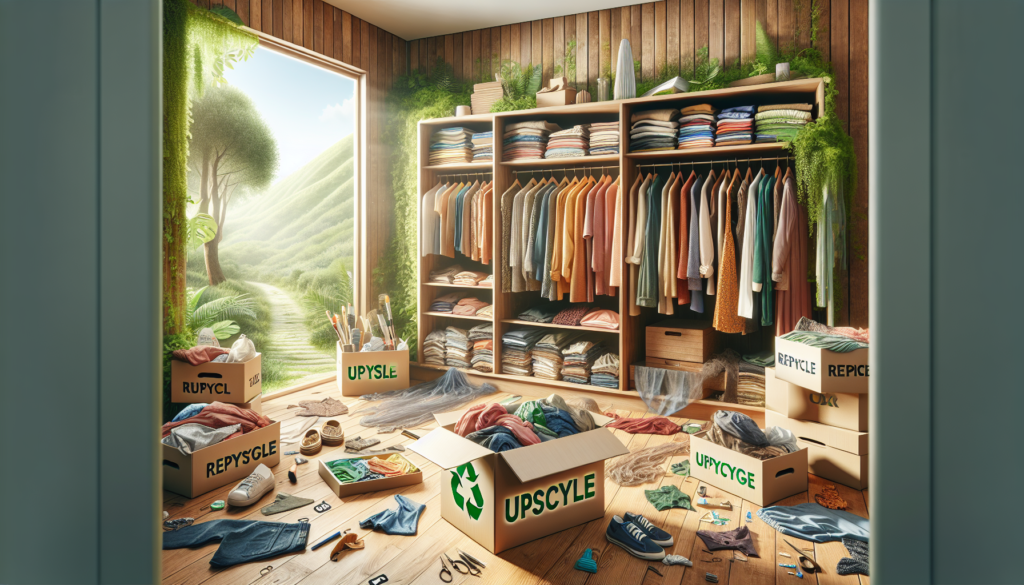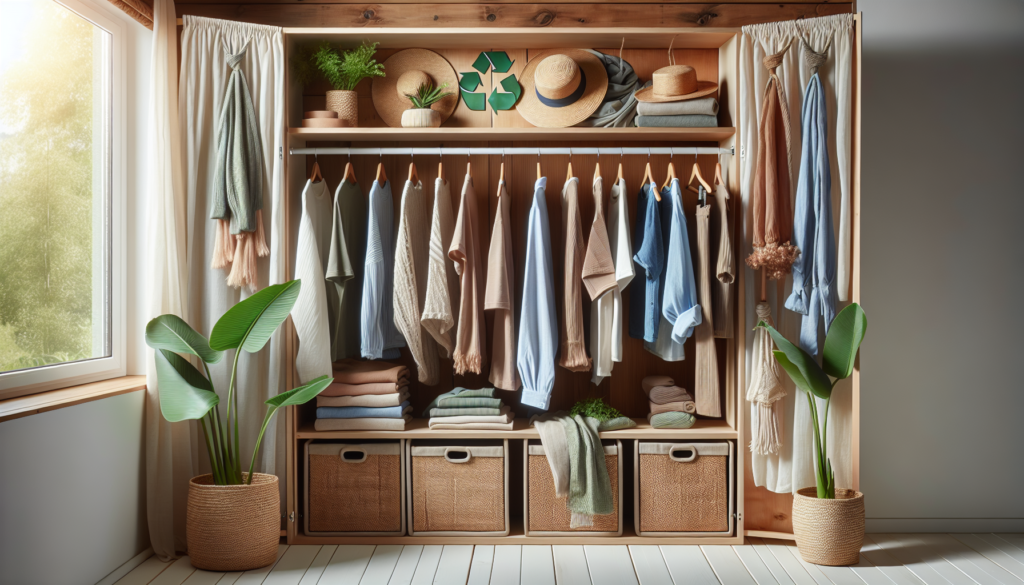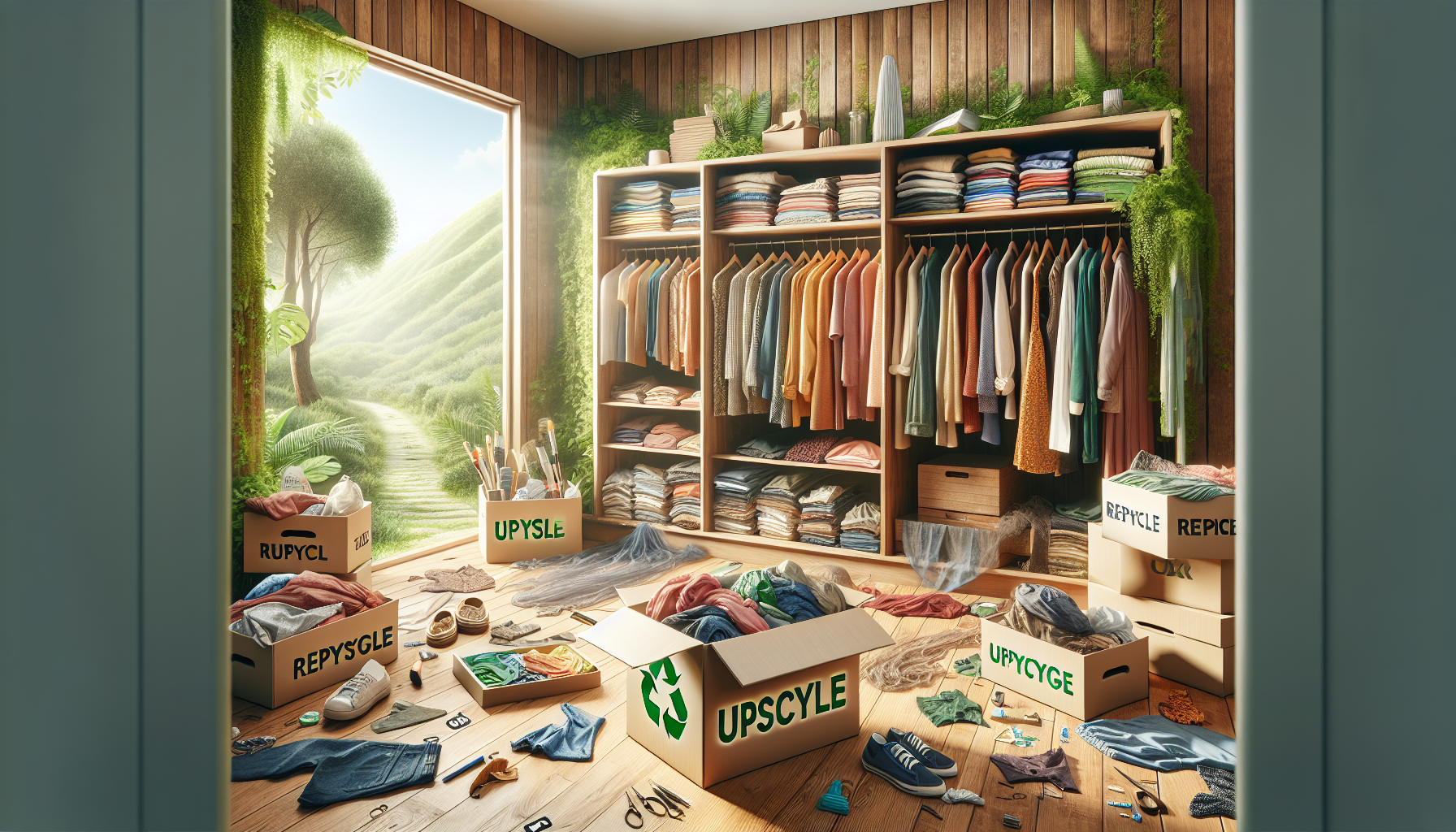Are you interested in creating a more sustainable and environmentally-friendly wardrobe? In today’s article, we will guide you on how to transform your wardrobe into an eco-conscious collection of clothing. By making simple changes and adopting mindful practices, you can reduce your impact on the planet and still look fabulous. From choosing sustainable materials to embracing ethical fashion brands, we will provide you with practical tips and advice to help you build an eco-friendly wardrobe that aligns with your values and style. Let’s get started on this exciting journey towards sustainable fashion!

Choose Sustainable Fabrics
When creating an eco-friendly wardrobe, one of the most important steps is to choose sustainable fabrics. By opting for fabrics that are produced using environmentally friendly methods and materials, you can reduce your carbon footprint and support sustainable fashion. To do this, start by researching sustainable fabric options. Look for fabrics that are renewable, biodegradable, and require minimal resources to produce. Some popular sustainable fabric options include organic cotton, hemp, linen, and bamboo. These natural fibers are not only better for the environment, but they also tend to be more durable and breathable compared to synthetic materials.
Opt for Secondhand or Vintage Clothing
Another great way to create an eco-friendly wardrobe is by opting for secondhand or vintage clothing. Thrift stores and consignment shops are treasure troves for unique and affordable finds. They offer a wide variety of pre-loved clothing that still has plenty of life left in it. Additionally, exploring online platforms dedicated to selling pre-owned items can also help you discover hidden gems from the comfort of your own home. Consider attending clothing swaps or organizing one with your friends to exchange clothes that no longer spark joy for you, but might for someone else. Lastly, don’t forget to visit flea markets and garage sales, where you might find vintage pieces with a unique history.
Support Ethical and Sustainable Brands
Supporting brands with sustainable practices is an excellent way to ensure that your wardrobe aligns with your eco-friendly values. Take the time to research brands that prioritize sustainability and ethical production. Look for certifications such as the Global Organic Textile Standard (GOTS) and OEKO-TEX, which ensure that the products have been manufactured in an environmentally and socially responsible manner. Transparency is also essential, so check if the brand provides information about their supply chain, labor practices, and any sustainability initiatives they have implemented. Another aspect to consider is whether the brand uses eco-friendly dyes and processes, as this can significantly reduce the environmental impact of the fashion industry.
Invest in Timeless and Versatile Pieces
When building an eco-friendly wardrobe, it’s crucial to invest in timeless and versatile pieces. Classic styles and designs transcend temporary fashion trends, ensuring that your clothes remain relevant and wearable for years to come. Focus on quality and durability by opting for well-made garments that are designed to last. By doing so, you reduce the need for frequent replacements and contribute to waste reduction. Choose versatile pieces that can be easily mixed and matched, allowing you to create a variety of outfits with just a few key items. Consider the longevity of the item as well – timeless pieces can become wardrobe staples, providing value for years instead of just a few wears.

Reduce Consumption and Practice Minimalism
Embracing minimalism and reducing consumption is not only beneficial for creating an eco-friendly wardrobe but also for simplifying your life. Start by assessing your current wardrobe and decluttering items that no longer serve you or reflect your personal style. Adopting a ‘less is more’ mindset can help you appreciate what you already have and avoid the constant desire for more. Avoid impulse purchases by shopping intentionally and with a plan. Instead of buying items that you might only wear once or twice, consider investing in high-quality pieces that you truly love and will wear frequently. By reducing your consumption, you can minimize your environmental impact and contribute to a more sustainable fashion industry.
Repair and Mend Clothing
One of the most important principles of sustainable fashion is extending the lifespan of your garments. Instead of disposing of items with minor damages, consider learning basic sewing skills and repairing them yourself. Sewing on a button or mending small tears are simple tasks that can save a garment from ending up in the landfill. Additionally, take the time to darn socks and mend holes, preventing further damage and prolonging the life of your clothing. By investing a little time and effort into repairing your clothes, you contribute to a circular fashion economy and reduce waste.
Care for Your Clothing Properly
Properly caring for your clothing is essential for maintaining their quality and longevity. Always follow the care instructions on labels to ensure that your garments are washed and cared for correctly. Washing clothes on a cold and gentle cycle helps conserve energy and prevents unnecessary wear and tear. Whenever possible, opt for air drying your clothes instead of using a dryer, as this can also save energy and extend the life of your garments. Another way to care for your clothing sustainably is by using eco-friendly and natural detergents that are less harmful to the environment and your skin.
Recycle or Upcycle Unwanted Items
When it’s time to say goodbye to items in your wardrobe, consider giving them a new lease on life through recycling or upcycling. If your clothes are still in good condition, donate them to charities or organizations that can distribute them to those in need. Many charitable organizations have programs in place to collect and distribute secondhand clothing. If your clothes are beyond repair or too worn out, look for textile recycling programs in your area. These programs collect textiles and recycle them into new materials or products. Another creative option is upcycling – transforming old garments into new creations, such as turning t-shirts into rags or quilts. By recycling or upcycling your unwanted items, you divert them from the landfill and reduce waste.
Swap and Borrow with Friends
Creating an eco-friendly wardrobe can also involve sharing and borrowing clothes with friends. Organizing clothing swaps with your friends is a great way to exchange items, providing everyone with new additions to their wardrobe without spending money or contributing to fast fashion. You can also host swap parties for accessories and shoes, allowing you to refresh your accessory collection sustainably. Additionally, consider borrowing clothes from friends for special occasions instead of buying new items that will only be worn once or twice. By sharing clothes, you not only reduce waste but also strengthen your community and foster a sense of shared responsibility for the environment.
Educate Yourself on Sustainable Fashion
To truly embrace sustainable fashion, it’s important to educate yourself on the topic and stay informed about the latest advancements. Read books and articles on sustainable fashion to gain a deeper understanding of its impact on the environment and society. Follow eco-conscious influencers and bloggers who share valuable insights and tips for creating an eco-friendly wardrobe. Documentaries about the fashion industry can also provide eye-opening perspectives and motivate you to make more sustainable choices. By staying informed, you can continually improve your eco-friendly practices and inspire others to do the same.
Creating an eco-friendly wardrobe is a journey that starts with conscious choices and continues with ongoing commitment. By choosing sustainable fabrics, opting for secondhand or vintage clothing, supporting ethical brands, investing in timeless pieces, reducing consumption, repairing and mending clothing, caring for your garments properly, recycling or upcycling unwanted items, swapping and borrowing with friends, and educating yourself on sustainable fashion, you can make a positive impact on the environment and contribute to a more sustainable future. So, embrace the challenge and create an eco-friendly wardrobe that reflects your values and personal style!

